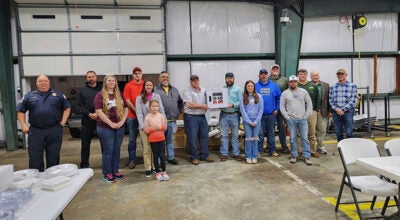Learning home gardening lingo
Published 5:22 pm Friday, October 2, 2020
|
Getting your Trinity Audio player ready...
|
By Kristi Hendricks
Reflecting on the lush 2020 summer growing season, we can’t overlook the heaps of landscape terminology tossed about as we bought plants in local nurseries, traded flowers with family and friends and looked beyond the garden gate with envy at our neighbors’ beds and borders. It is time now to revisit some of this home gardening lingo over a cup of steaming chai for a better understanding as the peony leaves begin to turn golden brown in the landscape.
Annuals: An annual plant is a plant that completes its life cycle, from germination to the production of seeds, within one growing season, and then dies. Examples of favorite annual plants in Southside Virginia are petunias, impatiens, begonias, zinnias and sunflowers. Although annuals will not survive the winter chill, new plants may germinate from some species that have self-seeded during the previous season.
Perennials: Plants that live through the winter such as trees and shrubs equipped for this gardening zone. Many flowers are herbaceous perennials. This means the tops of the plants die back to the ground each fall with first frost but the roots persist. In spring new plant tops merge. Examples of Tidewater Virginia perennials are asters, bee balm, iris and catmint.
Cole crops: Brassicas crop plants derived from wild cabbage in a genus of plants in the mustard family (Brassicaceae). Examples include broccoli, kale, brussels sprouts, cabbage and cauliflower. Rotate the location of cabbage family crops in your garden to avoid diseases and insect pest build-up.
Companion plantings: Certain plants, when grown together, improve each other’s health and yields. For instance, some attract beneficial insects that help to protect a companion. Others act as harmful insect repellents. For example, tomatoes are often planted with dill and basil to protects the plants and fruit from hornworms. Avoid planting together those plants that require the same nutrients as their neighbors or they may struggle to produce.
Green manure: Cover crops provide inexpensive soil improvement for planting in the fall and incorporating in spring, such as annual rye grass and oats. Cover cropping provides additional organic matter, holds nutrients that might have been lost over the winter and helps reduce erosion and loss of topsoil.
Deciduous or evergreen: Deciduous trees and shrubs lose their leaves each year while evergreens retain most of their foliage throughout the year. White oaks shed their leaves in autumn while the eastern red cedars remain green with aromatic foliage.
Hardscape and softscape: Hardscape refers to hard materials (patios, pergolas, French drain) incorporated into a landscape design while softscape is the horticultural element (living plants) of a landscape.
Explore more gardening jargon on the Virginia Cooperative Extension website of publications found online at pubs.ext.vt.edu/.




